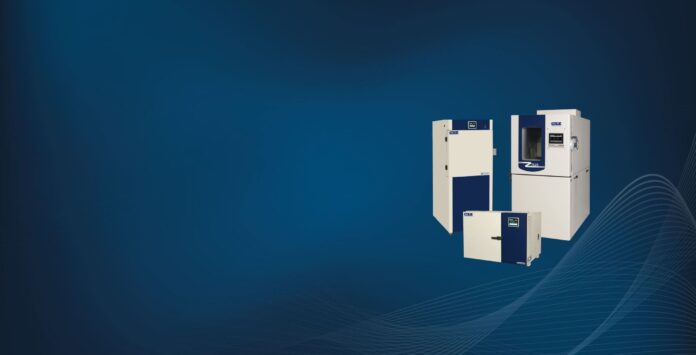
It’s an undeniable truth: Time is unkind to art. It has a way of eroding the vibrancy, cracking the surfaces, and degrading the material integrity of our most treasured artifacts. The fight against time is often the battle that curators, collectors, and enthusiasts of art grapple with daily. However, the arena isn’t always easy to navigate, especially when dealing with temperature-sensitive collections. Unseen, yet pervasive, temperature fluctuations can pose significant threats to these fragile relics of human history. This guide illuminates the art of maintaining such artifacts, preserving their beauty for generations to come.
Using Environmental Chambers
A curator’s ultimate weapon in the struggle against time is often the environmental chamber. Specifically designed to mimic specific climate conditions, these specialized containment units provide a regulated, stable environment for the safeguarding of delicate pieces. Consistency is the key to their success. They maintain a stable thermal state that significantly slows down wear and tear, thereby extending the lifespan of the artifacts.
To harness the power of an environmental chamber fully, understanding its functions is vital. The chamber can control humidity, light exposure, and air quality, along with temperature. Nevertheless, to maximize effectiveness, the user must tailor these variables according to the requirements of the stored artifact. Adjusting these controls requires precision and care, as even slight fluctuations can be detrimental to temperature-sensitive collections.
Ideal Temperature Ranges for Preservation

When it comes to preserving such treasures, knowledge of ideal temperature ranges can be a lifesaver. Generally, for most organic materials like paper, textiles, and certain types of wood, a temperature between 65 and 70 degrees Fahrenheit (18-21 degrees Celsius) is preferred. These conditions help to decelerate the natural aging process and ensure the longevity of the artifacts.
However, the ideal temperature can vary based on the individual artifact’s material composition. For instance, photographic materials and film necessitate cooler conditions, often below 40 degrees Fahrenheit (4 degrees Celsius). Meanwhile, metal artifacts can tolerate a wider temperature range, making them more resilient to environmental changes. Familiarizing oneself with the specific needs of each artifact type is key to their successful preservation.
Monitoring and Controlling Temperature
Temperature regulation forms the bedrock of successful preservation efforts. Regularly observing temperature levels inside the storage environment helps in the early identification of issues and ensures prompt corrective measures. The use of precise monitoring equipment, such as digital thermometers or data loggers, provides accurate, real-time readings of the thermal environment, helping to prevent undesired fluctuations.
Following the first paragraph’s ethos, control mechanisms play an equally crucial role. Thermostats or microclimate control systems can automate temperature regulation, minimizing human error. It is also essential to routinely calibrate these control systems to ensure their accuracy, further enhancing the preservation process’s efficacy.
Choosing Suitable Storage Locations
Your selection of a storage location is just as important as the container in which the artifacts are kept. Picking an area that is naturally cooler and less prone to sudden temperature swings, such as a basement, can create a favorable microenvironment for your artifacts. Such locations can provide an additional layer of protection against external factors that could interfere with temperature control.
Aside from the ambient temperature, other environmental factors such as humidity, light exposure, and air quality should also be considered when choosing a storage location. Minimizing exposure to natural light and maintaining proper ventilation can further contribute to the preservation of temperature-sensitive collections.
Displaying Temperature-Sensitive Artifacts

Showcasing artifacts poses a unique set of challenges. Maintaining the perfect balance between accessibility for public viewing and conservation can be complex. Display cases with climate control capabilities offer an excellent solution, allowing visitors to appreciate the artifacts while providing the necessary temperature and humidity controls.
Adopting suitable lighting techniques also augments the preservation process. Opt for low-intensity lights, preferably LED, to minimize heat production. Additionally, maintaining a considerable distance between the light source and the artifact prevents localized heating, thereby preserving the artifact’s structural integrity.
Handling and Transporting Artifacts Safely
The handling and transportation of temperature-sensitive artifacts is a delicate dance requiring precise choreography. To ensure safety during transport, the artifact should be securely packed in insulated containers that can maintain a consistent internal temperature. Specialized packing materials, such as archival tissue paper or Tyvek, can be used to provide additional protection.
Once arrived at the destination, allow the artifact to acclimate to the new temperature before unpacking. Rapid changes can induce thermal shock, leading to irreversible damage. Only trained personnel should handle these artifacts to minimize the risk of damage. Donning cotton gloves is a small but significant step in safeguarding these relics from oils and contaminants found on human skin.
Climate Control and HVAC Systems
Climate control extends beyond mere temperature regulation. An efficient HVAC (Heating, Ventilation, and Air Conditioning) system plays a pivotal role in creating an optimal environment for artifact preservation. It maintains the temperature, regulates humidity, filters airborne pollutants, and provides proper ventilation, forming an integrated solution for preservation needs.
However, the functionality of HVAC systems must not be taken for granted. Regular maintenance and upgrades are necessary to ensure their effectiveness and reliability. An inadequately maintained system can harbor mold, dust, and pests, causing more harm than good to the artifacts.
Dealing with Temperature Fluctuations

No preservation plan is complete without strategies for dealing with temperature fluctuations. Seasonal changes, equipment failure, or power outages can disrupt the climate-controlled environment. Having backup systems, contingency plans, and regular checks can ensure that such fluctuations do not damage precious collections.
Embracing modern technology, one could utilize smart systems to notify in case of abrupt temperature changes. Advanced systems even enable remote adjustments, providing a higher degree of control and reducing response time in emergencies. Combining proactive and reactive strategies can be the key to successfully managing temperature fluctuations.
In the Grand Scheme of Things
Preserving art, particularly temperature-sensitive pieces is more than just a responsibility. It’s a commitment to humanity’s shared past and a gift to future generations. Though the process might seem complex, understanding the intricacies of preservation can turn it into an art in itself. With the knowledge and tips shared in this guide, curators, collectors, and enthusiasts alike can help maintain these historical treasures’ brilliance and charm. After all, each artifact we preserve is a thread we keep from slipping out of the intricate tapestry of human history.
















